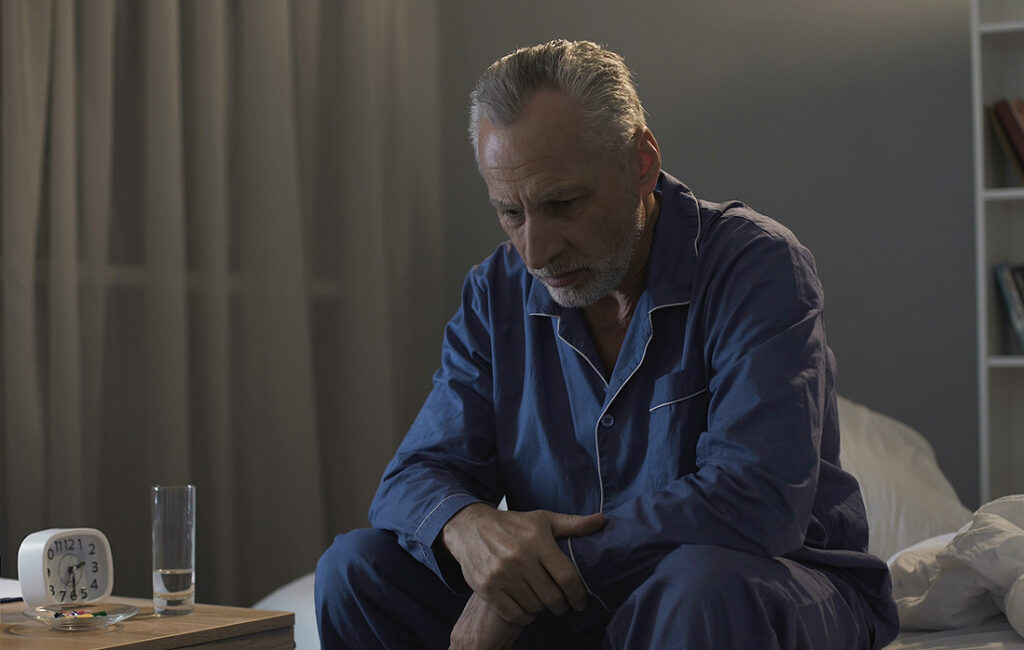
Located between the iliac bones and the sacrum, the sacroiliac (SI) joints connect the spine to the pelvis. Together these two joints not only provide support and stability but they also play an important role in absorbing impact when you’re walking, running, jumping, or lifting. Essentially, the sacroiliac joints are the shock absorbers for your body. With such a big job, you can bet that when your sacroiliac joints are a little worse for wear, you will feel it — day and night.
Anyone with SI joint pain can tell you sleep is no easy task. If you’re lying awake night after night, you might find the best sleeping position for sacroiliac joint pain relief is one you’re not quite used to.
Where to Find the the Sacroiliac Joints
“If you put your hands at the base of your lower back, you’ll feel two “bumps” on either side of your tailbone. These bumps are where your sacrum (your tailbone) connects to the ilium bones (the large, fan-shaped bones that form your pelvis) to form the sacroiliac joints.” — Dr. Grant Radermacher
What Is Sacroiliac Joint Pain?
Grant Radermacher, doctor of chiropractic at Ascent Chiropractic, tells us that “because the sacroiliac joints take care of transferring all of the forces between your upper and lower body, the SI joints are especially prone to problems. In fact, it’s estimated that up to 25 percent of cases of lower back pain are actually caused by dysfunctional sacroiliac joints.”
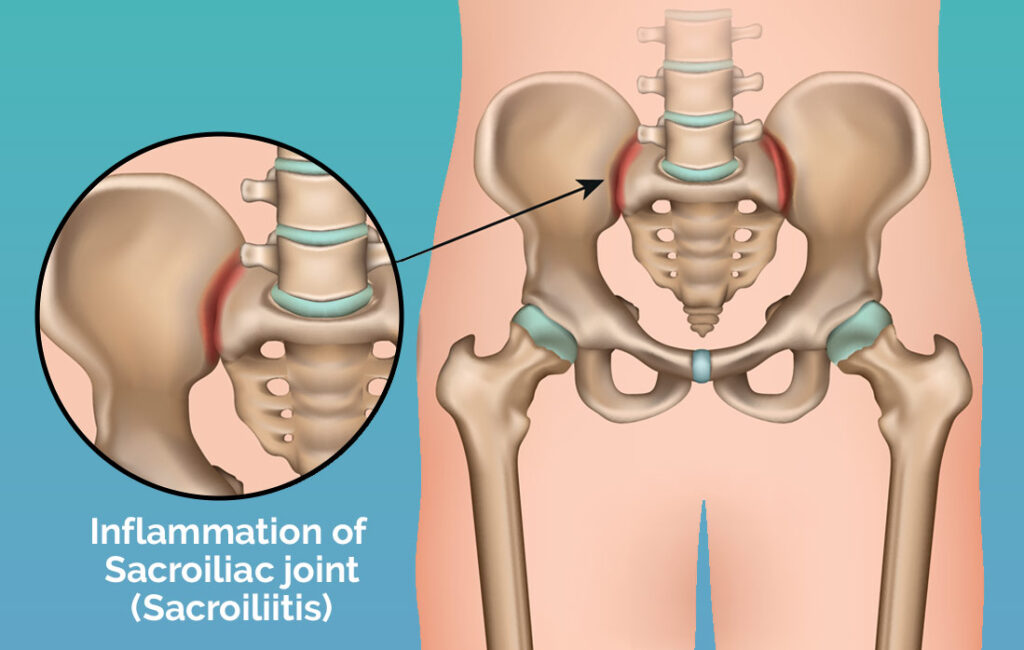
Sacroiliac joint pain is pain and discomfort that originates specifically from the sacroiliac (SI) joints. “It can be caused by various factors, including joint inflammation, injury, degeneration, or muscle imbalances,” says Phil Baines, Owner & Lead Chiropractor at Active Care Chiropractic. “Sacroiliac joint pain can manifest as lower back pain, buttock pain, or even radiating pain down the leg, and is often mistaken for sciatica or lumbar spine issues.” Additionally, sacroiliac pain can mimic other conditions, such as a herniated disc or hip problem.
Treatments for sacroiliac joint pain typically include physical therapy, stretching exercises, and pain medication. More severe cases may require joint injections to alleviate the symptoms and surgery to fuse the joint.
Why Is My Sacroiliac Joint Pain Worse at Night?
According to Radermacher, “Sacroiliac joint pain can be worse at night for several reasons. Lying down – whether on your back or your side – can put direct pressure on the sacroiliac joints. You also move less when you’re sleeping, which can lead to stiffness and tension in the joint. And finally, as your body relaxes and gets ready for sleep, your brain’s perception of pain tends to be heightened, making inflammation in the SI joints more noticeable.”
Sleeping Positions for Sacroiliac Joint Pain
“The optimal sleeping position for sacroiliac joint pain varies from person to person, but generally, it’s important to maintain a neutral spine alignment,” says Baines. Regardless of your preferred sleeping position, it looks like anyone with sacroiliac joint pain can find some relief by using something they use every day in a new way — the humble pillow.
“For most people, this can be achieved by sleeping on the side with a pillow between the knees to keep the hips aligned. Alternatively, sleeping on the back with a pillow under the knees can also help maintain a neutral spine position and reduce stress on the SI joints.”
Back Sleeping
“Sleeping on your back with your legs straight tends to put extra stress on the joint,” says Radermacher. So a supine position is probably the worst position for those with sacroiliac joint pain. For those committed to sleeping on their back, Radermacher suggests “propping your knees up with a pillow to relieve pressure on the SI joints and reduce pain.
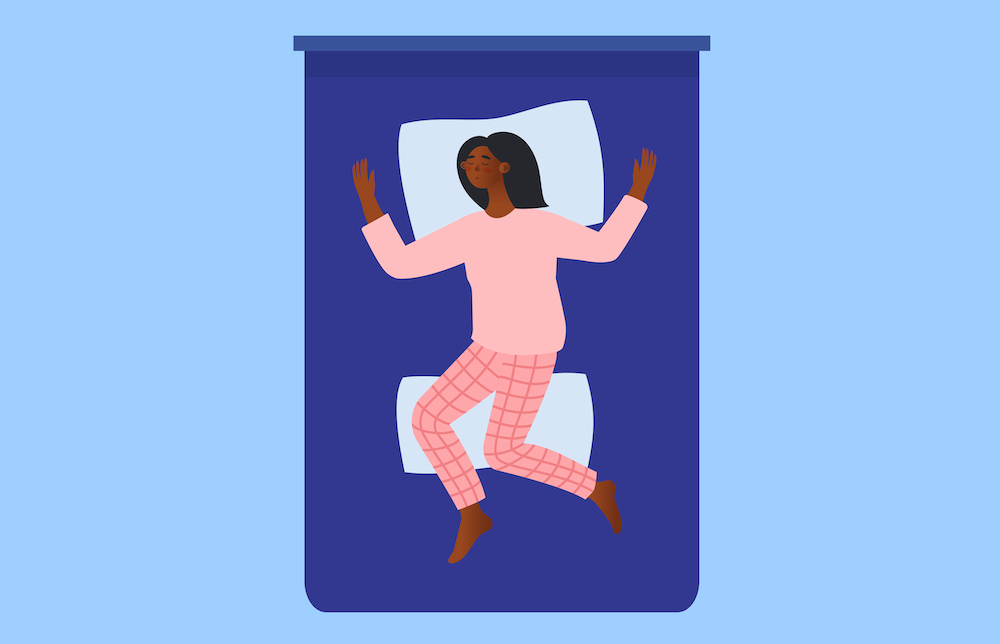
Stomach Sleeping
Also known as prone sleeping, this stomach sleep can put a lot of stress on your spine, so it may not be the best sleeping position for sacroiliac joint pain relief. If you can’t catch some zzz’s without being face first in your pillow, try placing a pillow under your pelvic area to support the natural curve in your spine and prop the area up a bit to take the pressure off your spine.
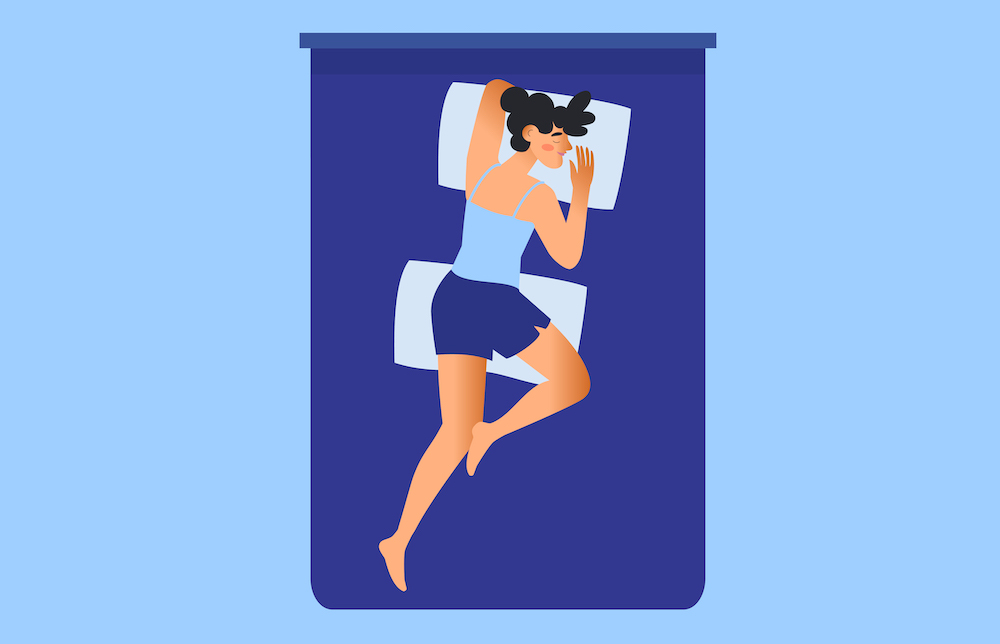
Side Sleeping
With back and side sleeping out of the equation for optimal sleeping positions for sacroiliac joint pain relief, the leaves side sleeping as the best, right? Well, not so fast. Remember that side sleeping can put pressure on your hip as well, turning up the discomfort you feel from sacroiliac joint pain.
But all is not lost; side sleepers have an excellent chance of sleeping in a neutral spinal alignment. “For most people, this can be achieved by sleeping on their side with a pillow between the knees to keep the hips aligned,” says Baines.
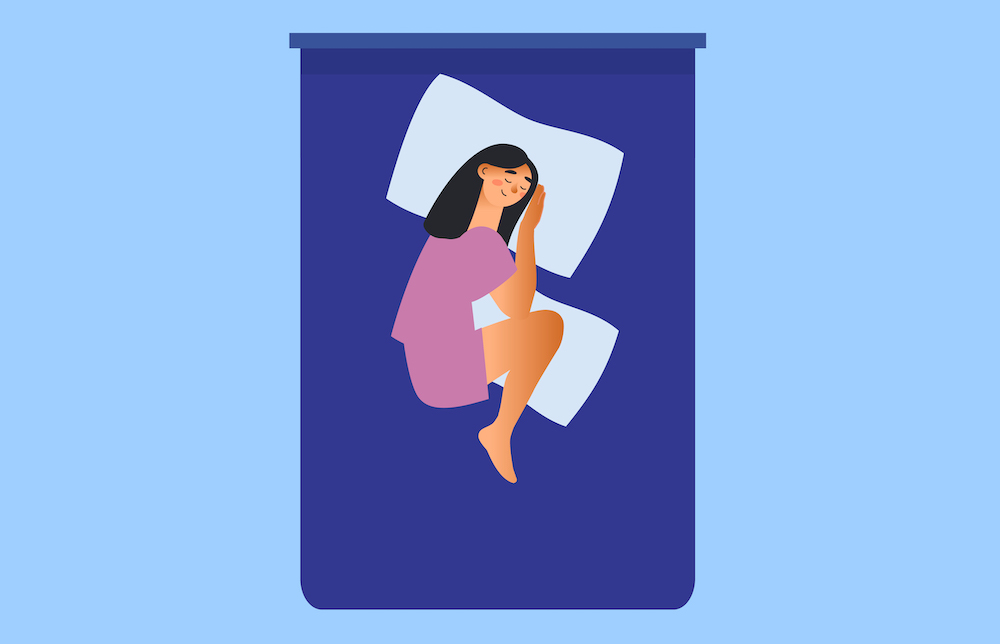
Other Tips for Sleeping with Sacroiliac Joint Pain
Alleviating the discomfort from sacroiliac joint pain doesn’t begin and end with changing your sleeping position or making accommodations to your preferred positions. Here are some other tips and considerations for alleviating the ache of sacroiliac joint pain and getting some shut-eye.
Using the Right Mattress
It’s no secret that the right mattress can be a make or break. For that reason, Baines says a “supportive mattress that conforms to the body’s natural curves while maintaining proper alignment” is the key to a good night’s sleep. Radermacher adds that a “firm mattress can help support the spine and reduce pressure on the sacroiliac joint.”
Stretching Before Bed
According to Radermacher, “gentle stretches can help to loosen up the muscles around the sacroiliac joint and reduce stiffness.” Specifically, he suggests:
- The child pose yoga stretch: start on all fours and slowly rock back onto your heels for 20-30 seconds)
- The supine knee-to-shoulder stretch: lay on your back and slowly bring one knee up to your opposite shoulder. Hold for 20-30 seconds, and repeat with the other leg.

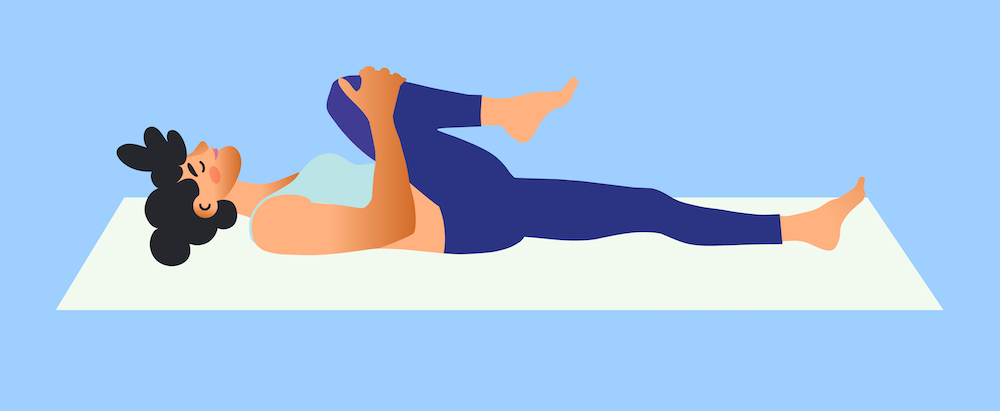
Ice the Area that Hurts Before Bed
Radermacher also suggests a little cryotherapy for sacroiliac joint pain relief. “Applying ice to a sore sacroiliac joint before bed helps reduce pain and inflammation,” he says.
Practicing Good Sleep Hygiene
Good sleep hygiene is always important — even more so when you’re dealing with chronic (or even intermittent) pain. So be sure to check the boxes for good sleep hygiene, including:
- Keeping a consistent sleep and wake schedule
- Making sure your sleep environment is dark, quiet, and cool
- Shutting off your devices at least 30 minutes before light out
- Engaging in a calming (and consistent) bedtime routine
The Last Word from Sleepopolis
Sacroiliac joint pain is pain or discomfort that originates from the sacroiliac (SI) joints. As a result of SI joint pain, sleep doesn’t always come easy — changing your sleeping position to maintain a neutral spinal alignment or using a pillow to achieve the same effect are great ways to alleviate the pain associated with sacroiliac joint pain. Doubling down on your sleep hygiene can help too.



























